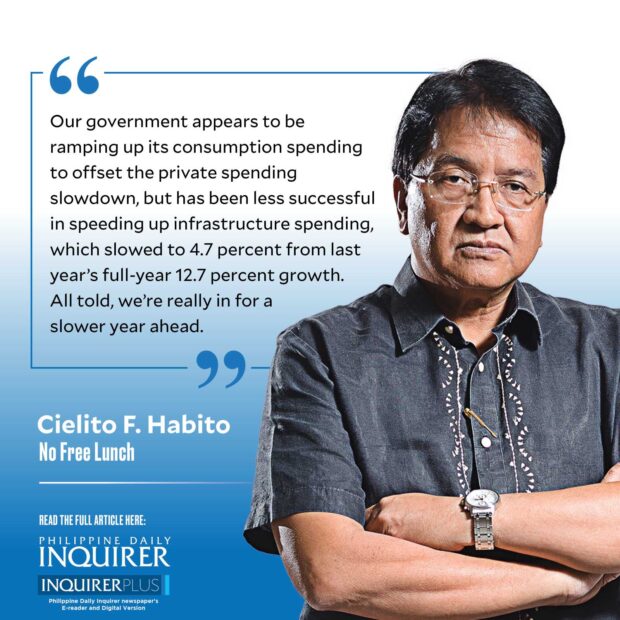The end of revenge spending
As expected, the economy grew at a significantly slower pace in the first quarter of this year (6.4 percent) than it did a year ago (8.3 percent). There are several reasons for this. On the production or supply side, the industry sector dramatically slowed down to only 3.9 percent year-on-year growth from 10 percent in the same quarter last year, and from a 6.5 percent full-year growth. The bulk of the industry sector is manufacturing, which grew by a mere 2 percent from an upbeat 9.4 percent a year ago, largely explaining the overall sector’s slowdown.
While agriculture, fishery, and forestry improved to 2.2 percent from a marginal 0.2 percent annual growth a year ago, it still grew far less than the overall economy did. Furthermore, the sector accounts for less than a tenth of total output and incomes, as measured by the gross domestic product (GDP). The biggest loser among agricultural crops was sugarcane, where full-year production fell by a hefty 17.5 percent in 2022, and further by 17 percent in the first quarter of 2023. There has been so much needless debate and anguish over sugar imports, yet the large production shortfall had been staring us in the face since early last year. Domestic prices of the commodity have remained way above the normal levels we were accustomed to before last year’s fiasco, telling us that importation has been far from enough to close the supply gap. Worse, the manner by which import rights were awarded exclusively to three favored exporters, rather than allow market competition to prevail, ensured that prices would not normalize even with importation, and that the favored importers would make a killing — yet another example of public policymaking at its worst, in complete defiance of basic economics. Given our decades-old history of mismanaging our agricultural sector and allowing it to be the milking cow of a lucky few at the expense of a few million impoverished farmers and even far more impoverished consumers, one might ask: What else is new?
Prominent farm product exports such as pineapple, rubber, and cacao were the other major crop losers that saw production declines, while bananas also stagnated at 0.1 percent growth — all reflecting the overall slowdown in export demand worldwide.
Indeed, the economy’s slowdown could be better understood from the demand or spending side of the market, where the causes of the slowdown are easier to trace and explain. The biggest part of that demand comes from private consumers or households, accounting for more than three-quarters of total spending for the economy’s goods and services. This has seen a marked slowdown from 10 percent a year ago to only 6.3 percent in the first quarter, and there are two reasons for this. One, the so-called revenge spending that elevated consumer spending growth in the aftermath of the pandemic lockdowns (“Are Pinoys ‘revenge spending’?” 12/21/21) has apparently ended. This has given way to the second factor, i.e., elevated inflation (translation: faster-rising prices) that has spurred more prudent spending. Higher inflation, even as it has slowed in recent months, will continue to bear on household expenditures in the months ahead, making slower growth persist through the rest of the year.
The other major spending slowdown comes from the foreigners who buy our export products and services. This spending accounts for the next largest share (28 percent) of total expenditures in our GDP, and has dramatically slowed down to a mere 0.4 percent annual growth from 10.4 percent in the same quarter last year, reflective of a similar “revenge spending” then. And like domestic household spending, consumer spending elsewhere is dampened by higher inflation worldwide caused by global supply chain disruptions due to the Russia-Ukraine war, and bloated money supplies that funded governments’ COVID-19 responses. Meanwhile, our government appears to be ramping up its consumption spending to offset the private spending slowdown, but has been less successful in speeding up infrastructure spending, which slowed to 4.7 percent from last year’s full-year 12.7 percent growth.
All told, we’re really in for a slower year ahead.





















